SPOTLIGHT
In the new normal after Covid-19, where do masks, sanitising and ventilation fit in?
South Africa’s fifth wave of Covid-19 infections is comparatively small and is already abating. As with the fourth wave, infection was much less likely to result in hospital admission or death than in the first three waves. In light of these changes in the pandemic, Aisha Abdool Karim asks what the ‘new normal’ should look like when it comes to mask-wearing, ventilation, hand sanitising and other preventative measures.
The fifth wave, driven by the BA.4 and BA.5 subvariants of Omicron, was also the smallest so far in terms of infections. At its peak there were 7,685 new cases reported on 11 May. This is about a third of the peak during the Omicron-driven fourth wave, during which 20,638 new cases were reported on 18 December.
Despite the boom in cases it sparked in December, Omicron was shown to cause less-severe disease compared with other variants of concern, such as Delta which drove South Africa’s third wave. Omicron marked a shift in the trend with its faster peak and fewer hospital admissions, as shown in South African data published in The Lancet Global Health on 18 May.
Here’s where South Africa is at right now: the recent wave was driven by less-intimidating and deadly variants, and the country ended its state of disaster in April. There are also high levels of immunity both from vaccination and previous infection, with blood donor data showing as many as 87% of people in South Africa have been exposed to SARS-CoV-2, the virus that causes Covid-19.
Still more to learn: how to spot a trend
So, does all this mean that it’s time to let go of the remaining pandemic restrictions?
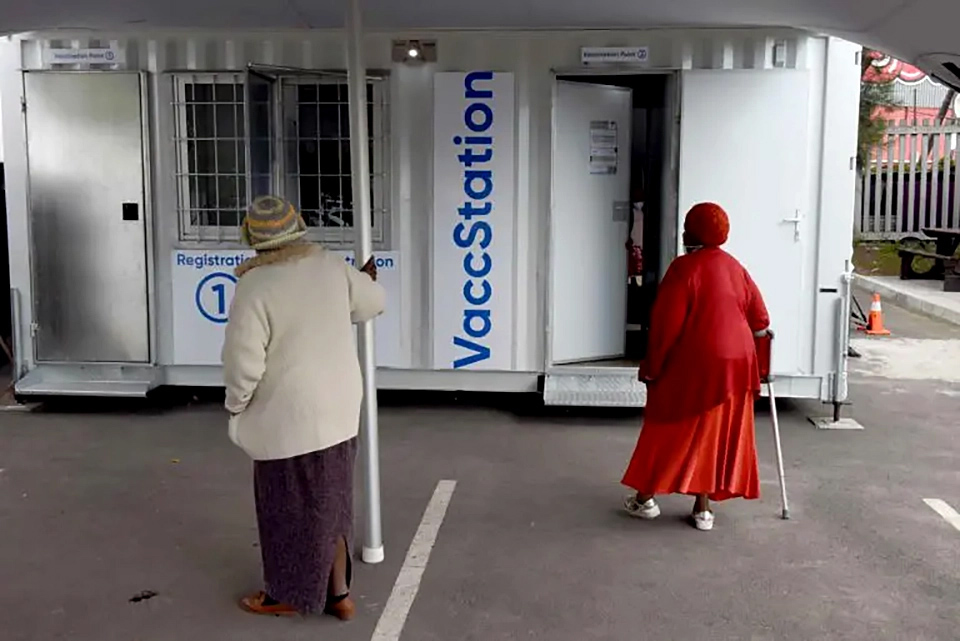
A vaccination site in Khayelitsha, Cape Town. (Photo: Nasief Manie / Spotlight)
The answer is not yet, says Professor Barry Schoub, chairperson of the Ministerial Advisory Committee on Covid-19 vaccines. As he explains, it’s still too early to make any assumptions about what this virus could look like in the future.
“We can’t base our predictions just on Omicron,” says Schoub. “It’s too premature. Once we get to a period of time where we’ve got a better handle on the potential of this virus, then we can start relaxing [safety measures] but I think it’s too early at this stage. I think we’re still in a transitional phase.”
Getting a handle on the virus, according to Schoub, means understanding what this bug is capable of – how it can evolve and change to outsmart the body’s natural defences, and how serious the disease it causes can be. He estimates we could know as soon as six months or a year from now.
But until then, the country needs to be ready to continue certain protocols including wearing masks indoors and getting vaccinated.
Can we go back to normal now?
Two years on, the one thing we can learn to appreciate is that context is everything.
Curbing the risk to people’s health has come at a high cost to their lives and this needs to be balanced, argues Schoub. In between waves, when the risk is lower, there is no harm in relaxing some restrictions, which has been happening already.
While we continue to assess the virus, Schoub advocates for the continued use of masks indoors and limiting the size of gatherings, particularly where there is little ventilation and the virus can spread rapidly.
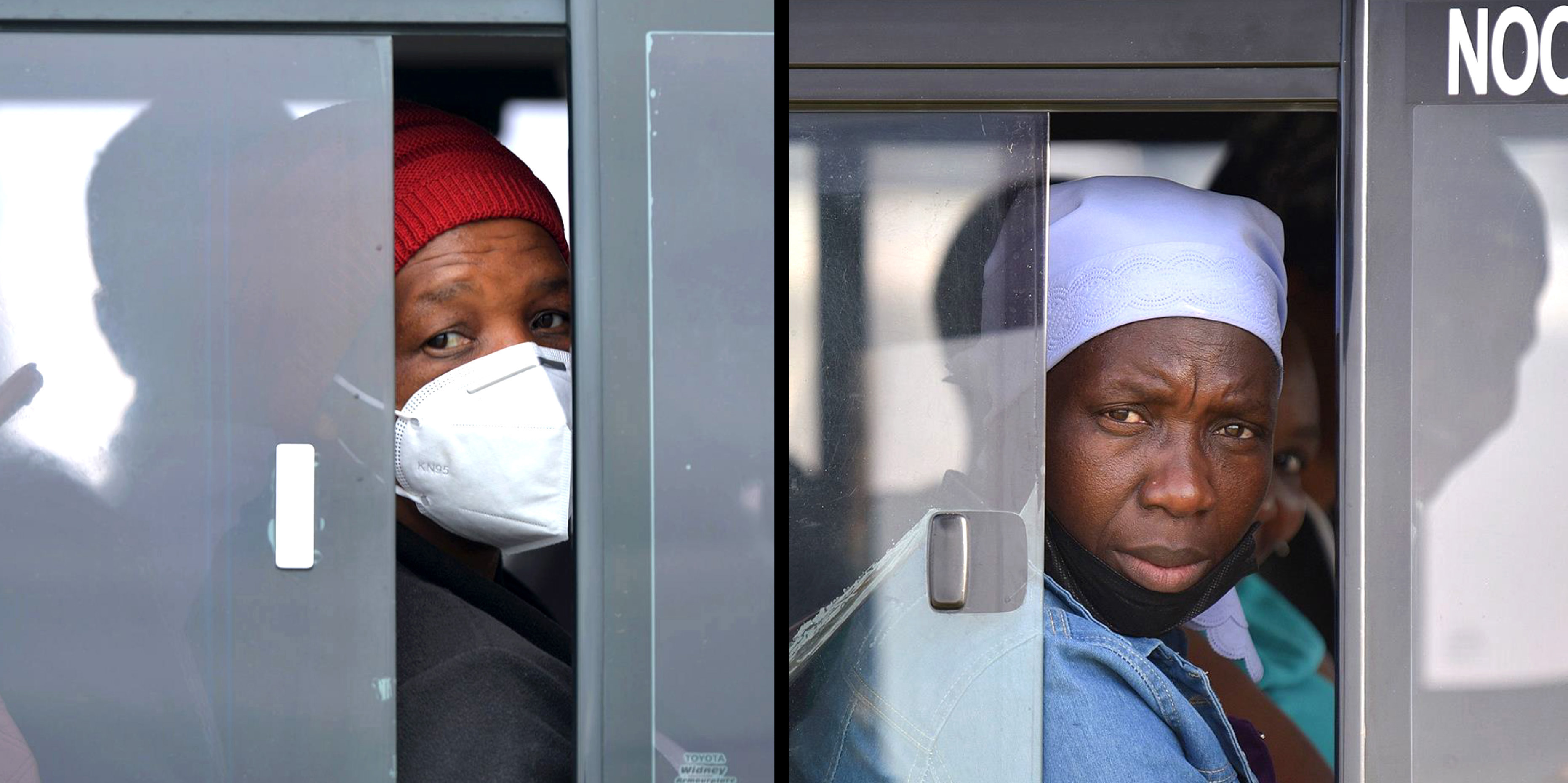
Enthusiasm for mask-wearing has dropped since April 2021. (Photo: Deon Ferreira)
In this way, policies can help balance people’s desire to return to pre-pandemic life while helping retain steps that can help them stay safe as the virus continues to circulate.
Pandemic fatigue is also a very real concern – where people are simply tired of hearing about or dealing with Covid and are less likely to adhere to safety measures.
While people tend to be on high alert during a wave, their willingness to continue precautions drops almost immediately afterwards. The most recent South African Health Review found that mask uptake increased substantially from May 2020 to May 2021 – from just more than half to 83% of all adults. It found that despite initial differences between areas, once the second wave hit at the start of 2021, everyone became more compliant. However, enthusiasm for masks dropped back down by April 2021.
To accommodate this, we could begin to “give people a break during periods of low transmission,” says Professor Koleka Mlisana, who co-chairs the Ministerial Advisory Committee.
The trouble in switching to situation-dependent measures is whether they’ll be enforceable, she warns.
“When you tell people don’t wear masks outside but put them back on when you’re inside, then there’s always a concern about how to maintain that switching on and off,” Mlisana explains. “Then if there’s a new variant, how do we bring it back?”
Masks up, down, or on the ground?
Even if the decision is driven by where South Africa is in its epidemic, masks will still be around in some contexts, because they work.
In July 2021, a review of the evidence on masks for Covid-19 was published in the American Journal of Infection Control. The researchers evaluated six different studies and found that masks helped protect people from getting Covid. In fact, the role of masks was most apparent in healthcare workers, lowering the risk of infection by almost 70%.
Not all masks offer the same protection, however.

Discarded masks, gloves and other medical waste. (Photo: Black Star / Spotlight)
An N95 mask, for example, is secure, filters extremely tiny particles and offers the best protection. It’s also more difficult to find. Although evidence suggests that, comparatively, there isn’t much difference when it comes to surgical masks, which can be bought at a pharmacy.
At the bottom of the pecking order, cloth masks don’t do much air-filtering. A December 2020 paper published in JAMA Internal Medicine found that their filtration efficiency varied from 25% to 79%, depending on the material and the number of layers.
In South Africa, though, it’s simply not practical to expect everyone to have surgical-grade masks, let alone an N95, says Mlisana.
“Think of it like a loaf of bread. I’d rather give someone half a load than none at all. It’s the same with masks – some protection is better than nothing. I would not want us to completely do away with masks just because not everybody can afford even a surgical mask.”
So, from Mlisana’s point of view, if all you have is a fabric face covering, you should continue to use it.
Not everyone is on the same page, though.
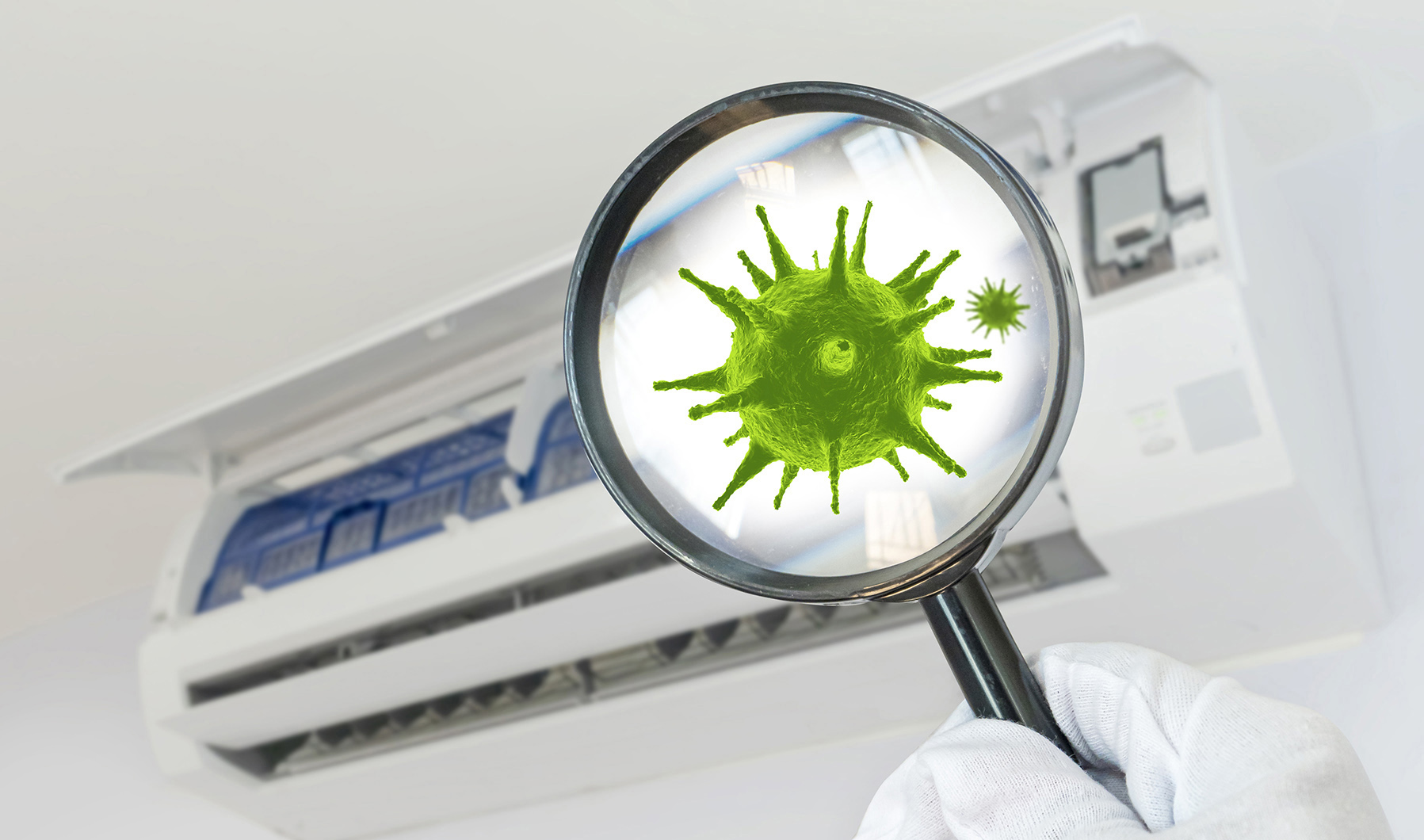
We need to improve the safety of our shared air, especially in crowded settings. (Photo: iStock)
Professor Robin Wood, an infectious disease specialist and emeritus professor at the University of Cape Town, says we would do better to do away with masks altogether, given that some have little value, especially if worn incorrectly.
“The mask is trying to decrease a person’s exposure to infectious particles but how much it does so will depend on the quality of the mask,” says Wood. “The time you spend in an environment is also a factor because if you’re somewhere for a very long time then the mask isn’t going to make any difference.”
That said, Wood acknowledges that masks are “particularly important for limited exposures” and that they have the most value in healthcare settings.
It goes hand in hand: relearning about clean air
It’s not all bad news, though. As we learn more, there are some things that can safely be left behind and other lessons to keep.
“One of the lessons that I would want people to remember is that ventilation is an important factor,” says Wood.
Ventilation helps keep the air in a room clean and healthy. This is achieved by bringing air from outdoors into a building or room air and making sure the air is circulating properly within an enclosed space. You can properly ventilate a space through design, like including windows, or through machines, like fans in air ducts.
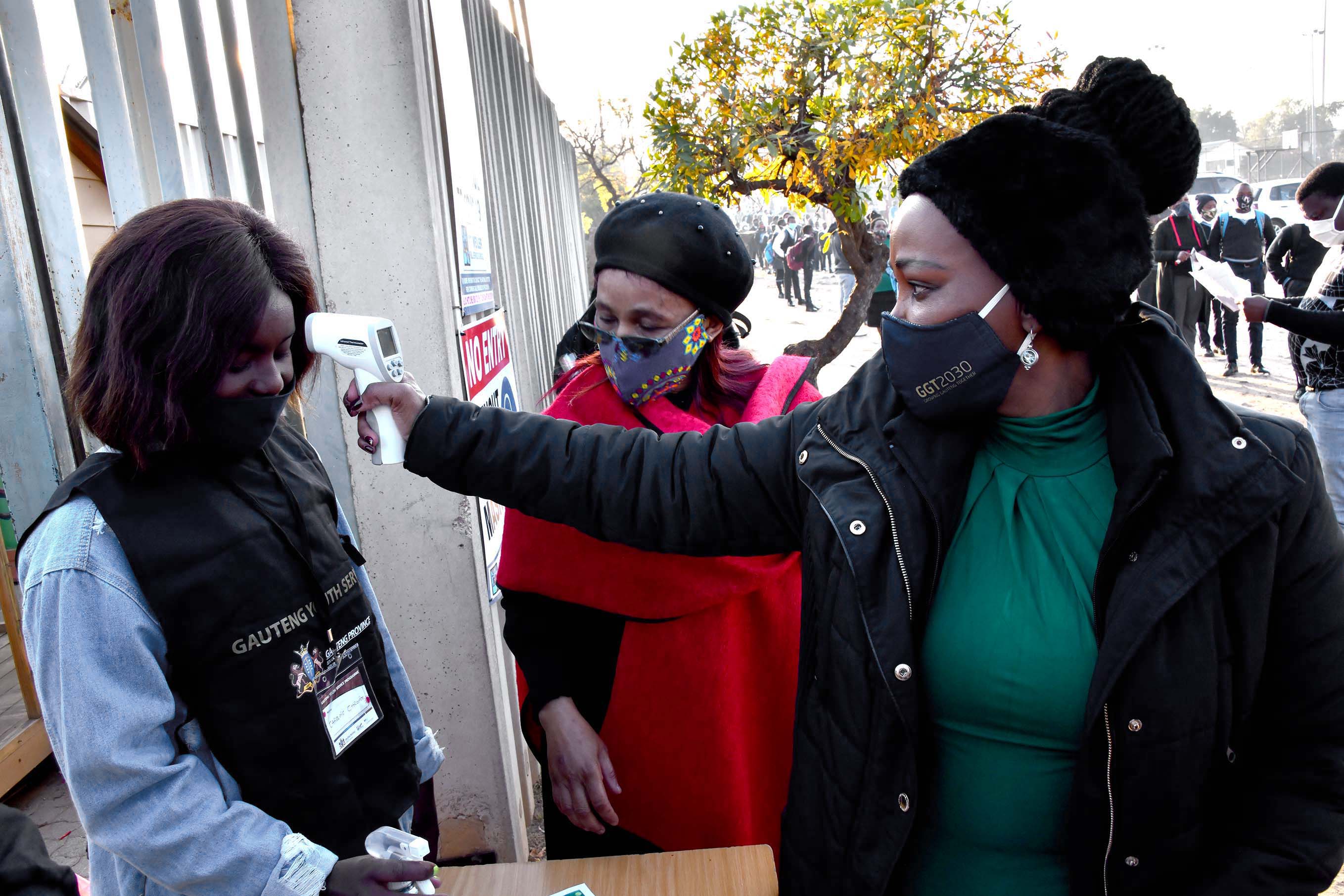
Gauteng social development MEC Morakane Mosupyoe screens staff at MC Weiller Primary School in Alexandra. Some experts agree that temperature screening does not serve any meaningful purpose in preventing Covid-19. (Photo: Elmond Jiyane / GCIS)
“When you have crowded areas,” Wood says, “you’re essentially coming down to how much air people are swapping between themselves. People in more urban settings would probably swap about 20l of air a day, people living in crowded townships swap about 40l to 100l per day, and people in prisons are probably swapping 2,000l a day.”
Increasing airflow in spaces like that then becomes critical, not just for Covid but also for preventing the spread of other diseases. This isn’t just for buildings but also applies to enclosed spaces, such as buses and other forms of public transport.
“We need to relearn this, buildings aren’t designed on the basis of health and that needs to change,” Wood says. “We should be improving those sorts of environmental factors, especially where there are crowds.”
But that’s not a process that can happen overnight because buildings can’t immediately be changed to create more ventilation.
For this reason, Mlisana emphasises that “when we talk about mask-wearing, it always has to go with the poorly ventilated buildings we have”.
“We need more open space because we don’t have that much, and to find a way to improve the ventilation of our buildings,” she says.
It’s time for some measures to go
Not all prevention measures are worth sticking to. The experts interviewed by Spotlight were broadly in agreement about the following advice.
One of the first measures that should go is temperature screening. Those infrared guns that are pointed at your forehead or hand at a shop or building entrance aren’t giving any useful information about your body temperature. They don’t serve a purpose and aren’t helping.
Next is sanitiser. There’s no need to be sanitising your packages or even getting a routine chemical spray every time you walk into a shop. The virus is more likely to spread from one person to another than it is to launch a sneak attack from your vegetables. It’s highly unlikely that you’re going to get Covid from touching a doorknob because the virus doesn’t seem to last that long on surfaces. This means we don’t need to do deep cleaning, but it may still be the next best option to consider in places without good ventilation.
Hand-washing is a totally different ball game and a valuable exercise when it comes to general hygiene. Regularly washing your hands helps kill germs and protects you from any number of diseases.
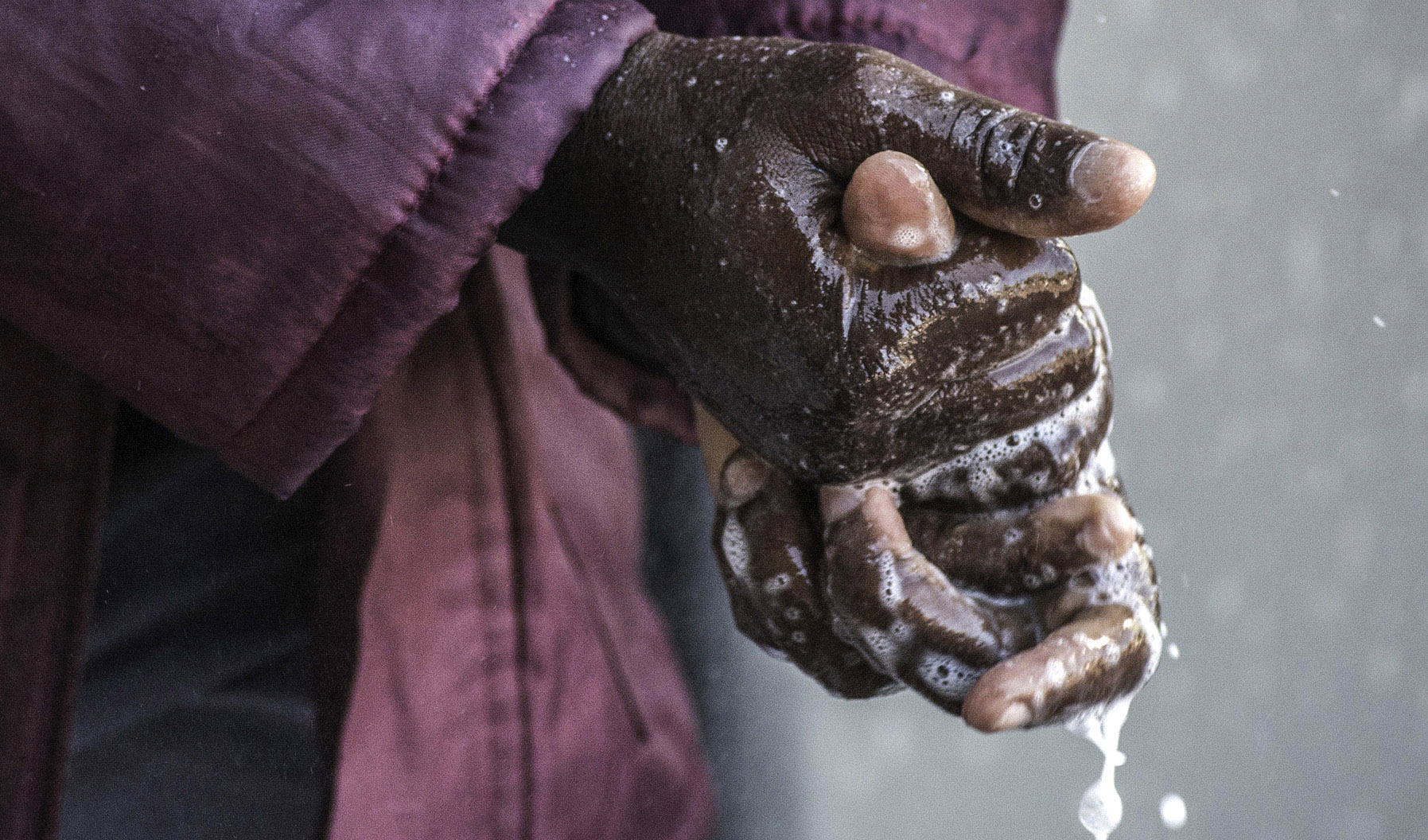
Although deep cleaning of surfaces is no longer needed to prevent Covid-19, hand washing remains a must to prevent diseases from spreading. (Photo: Waldo Swiegers / Bloomberg via Getty Images)
Keeping your distance from others, on the other hand, all depends on the time and place. Physical distancing is all about limiting contact with other people. The practice has its pros, particularly in crowded and poorly ventilated indoor areas. The con is that it can lead to isolation and take a toll on people’s mental health.
As with everything, it comes down to evaluating personal risk. During periods when the virus is spreading, perhaps take a rain check on going to a large event, but between waves, if you’re taking the necessary precautions, you should be okay to attend that dinner party.
The take-home message: Do what you can to stay safe. Get vaccinated, wear a mask indoors and if you want to be around people, it’s better to do so outdoors where there’s lots of fresh air. If you have to meet indoors, try to keep windows and doors open as much as possible.
Mlisana cautions: “We really are not over Covid because we still see these blips and we still need to gain more understanding of what they mean, particularly in the long term.” DM/MC
This article was published by Spotlight – health journalism in the public interest.

"Information pertaining to Covid-19, vaccines, how to control the spread of the virus and potential treatments is ever-changing. Under the South African Disaster Management Act Regulation 11(5)(c) it is prohibited to publish information through any medium with the intention to deceive people on government measures to address COVID-19. We are therefore disabling the comment section on this article in order to protect both the commenting member and ourselves from potential liability. Should you have additional information that you think we should know, please email [email protected]"



 Become an Insider
Become an Insider